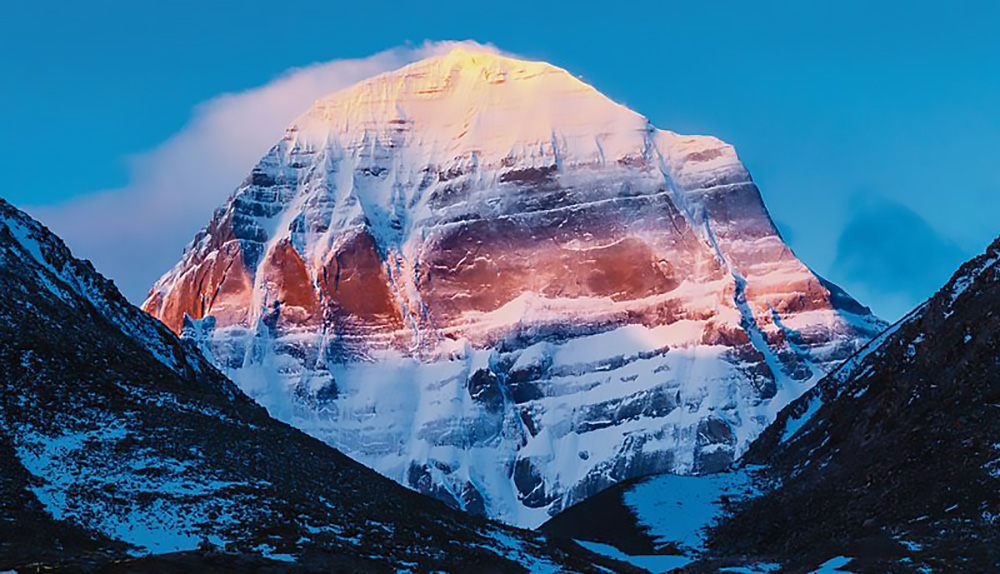Located in the far west of the Tibetan Plateau, Mount Kailash is a mysterious and revered mountain. In Hindu, Jain, Buddhist, and Bon religions, it is the home of the gods and the center of the universe. On its steeper slopes, you’ll find sedimentary rock strata and glaciers in addition to the granite and gneiss that make up most of the mountain. Lord Shiva, one of the most important deities in Hinduism, is said to have lived there, while the Buddha Cakrasamvara and his consort Vajrayogini are said to have called the axis mundi home. Jainism considers the mountain to be a significant reservoir of spiritual energy, and meditating on its slopes is thought to facilitate the attainment of inner tranquility and spiritual enlightenment. According to Jain mythology, Astapada is the location where the first Jain Tirthankara, Rishabhdeva, attained enlightenment.
The summer months of June through August are ideal for setting off on a hiking adventure. Tibetans hold Mount Kailash in the highest regard due to its spiritual significance and its mysterious allure. Many people think the Yeti live and stay in this area. As a holy place in Hindu and Buddhist traditions, it has been the focus of innumerable stories and myths that go beyond its physicality as a mountain.
Hikers are also drawn there by the area’s stunning natural beauty, making it a popular tourist spot. The purpose of this article is to provide a detailed explanation of Mount Kailash, including its cultural and religious significance, the Kailash Mansarovar Yatra pilgrimage, hiking options, best visiting times, and access ways. Mount Kailash has an unusual shape, with four sharp projections that point in the cardinal directions. There are other smaller peaks in the area, including Mount Nandi, which is commonly believed to be the home of the sacred bull of Lord Shiva. Mount Kailash is sacred to both the Hindu and Buddhist faiths because it is believed to be the location of Lake Mansarovar, the site of Shiva’s dwelling.
It is believed that only the physically and spiritually strong should attempt to climb Mount Kailash, leading to the urban legend that hikers who reach old age on the summit die of old age. But age, general health, and altitude sickness are just a few factors that might affect a person’s ability to climb a mountain safely. People of all ages and physical abilities have perished while attempting to reach the summit of Mount Kailash. Climbers of Mount Kailash in China are required to have government-issued permits and be accompanied by licensed guides. Climbing a mountain safely and successfully depends on a number of elements, therefore it’s vital to examine the myth objectively.
Shambhala, the mythological land associated with Buddhism, is usually believed to be home to the Buddha of Compassion. Many people travel to Mount Kailash as a rite. Guidelines and policies for photography and videography, safety and security, emergency services and contacts, local laws and regulations, eco-tourism and sustainability initiatives in the area, environmental concerns and challenges, responsible tourism practices, a list of frequently asked questions, the spiritual significance of the area, and to be reviewed before a visit. The essay concludes with a meditation on the religious and cultural significance of the holy mountain.

